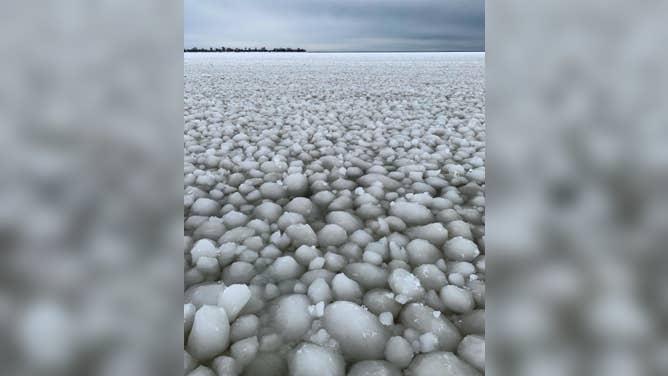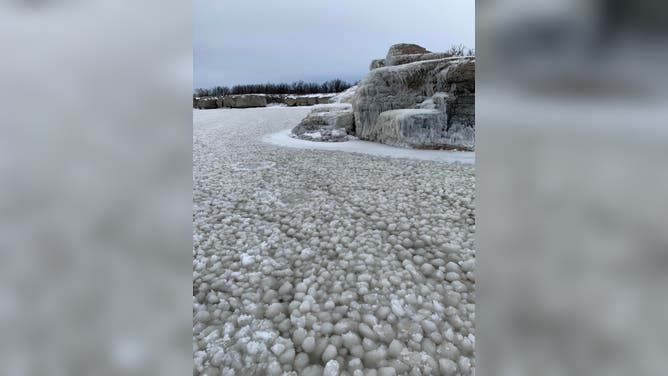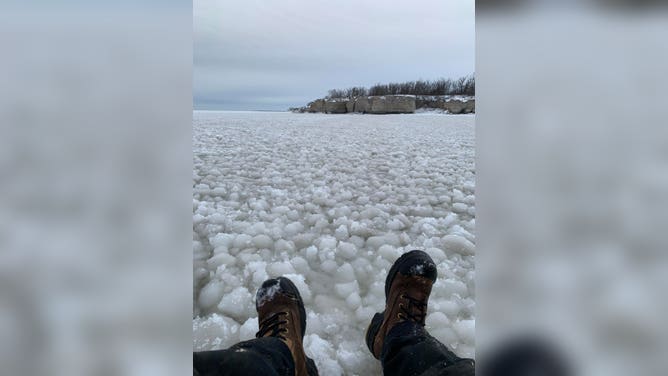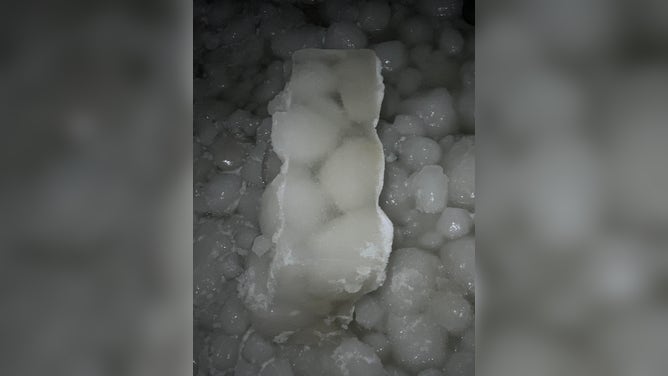Thousands of rare ice formations cover Canadian lake
Weather conditions came together perfectly for thousands of slush balls to form.
STEEP ROCK, Manitoba – Visitors to Lake Manitoba in Canada were treated to a rare phenomenon that’s only seen every few years around the globe.
Weather conditions came together just right to produce thousands of slush balls along the shore of the massive lake.
Peter Hofbauer, owner of Steep Rock Kayak, said he’s lived in Manitoba for around 40 years and never recalls seeing the sight.
"I’ve seen pancake-shaped ice but not thousands of spherically shaped balls," Hofbauer said.
To see the phenomena, experts say air temperatures need to be below freezing, and onshore winds and waves need to be significant enough to keep the waterway from becoming a solid sheet of ice.
Jeffrey Kavanaugh, an associate professor at the University of Alberta, said eventually some form of seeding will transition into ice, which will continuously grow into a slush ball.
The seeding can start from anything from snowfall to spray from the waterway, but experts say it needs to be light enough to be thrown up in the air and land back on the surface as a frozen entity.
"Because of its relative rarity, slush ball formation isn’t particularly well understood," Kavanaugh said.
Mikke Boguth, a meteorologist at the National Weather Service office in Gaylord, Michigan, said he has never seen slush balls in-person, but his office has seen reports the phenomena occasionally happens along the Great Lakes.
"When you start getting a contiguous ice sheet on the water, you’re not going to get these," Boguth said. "You need the initial stage of ice formation, where you have some slush ice floating in the lake and where and as the waves start hitting the slush ice, it actually starts rolling it."
Last year, officials at Holland State Park along on eastern shore of Lake Michigan spotted a similar phenomenon, which garnered all types of social media reaction.
Boguth said there’s still plenty of time before the chance of seeing slush balls happens in Michigan or along any of shorelines of the Great Lakes.
Water temperatures are still well above freezing, and meteorologists say it could take into the New Year before significant ice formation takes shape.
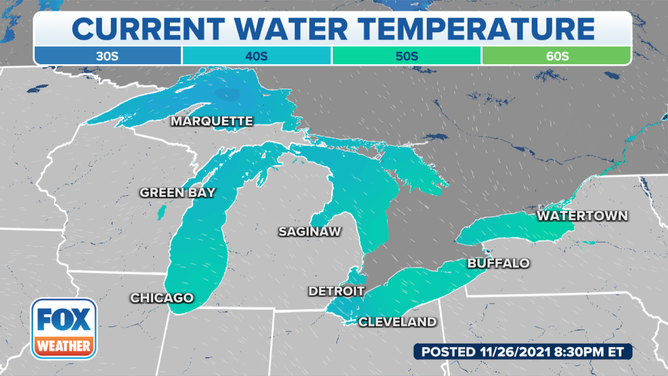
Water temperatures for large parts of the Great Lakes have dropped into the 40s.
(FOX Weather)
